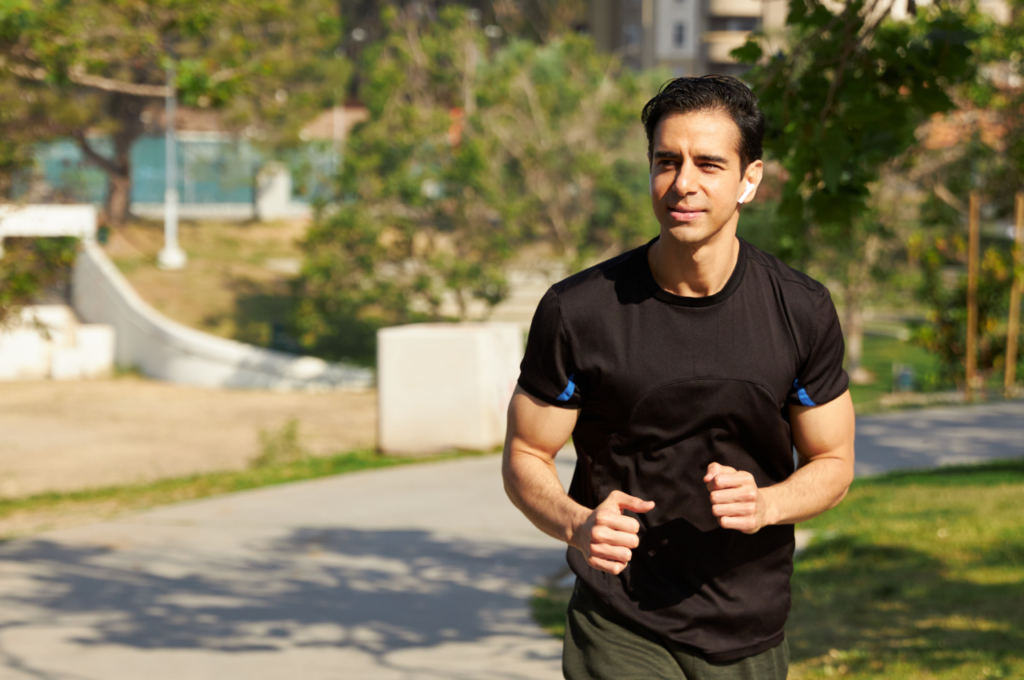When it comes to supporting the most sedentary employees to start exercising, it’s not as simple as saying “Just do it”. For those who are not used to exercise, or are nervous about getting started, that initial step can be daunting. PEAR’s Chief Science Officer, Jon Ackland, offers a simple seven-step approach to ease even the most reluctant employees into the fitness habit.
Although there are clear benefits to an active and healthy workforce, 25.3% of all US adults are physically inactive. While specific statistics on the fitness levels of employees are not available, it can be inferred from the general population data that a substantial portion of the workforce may not be meeting the recommended levels of physical activity.
Since less active employees may be at higher risk of health issues (and increased healthcare costs) helping them take steps towards a healthy and active lifestyle can provide tremendous benefits. According to Jon, the best way to help non-exercisers create a new fitness habit is to start with baby steps.
Step One: Choose the Right Time and Make a Plan
“Before diving into physical activity, it’s important to ask yourself if it’s the right time,” says Jon. “Don’t start when you’re feeling exhausted, overwhelmed, or too preoccupied with something else, as this can make it harder to stay motivated and on track.”
Next decide what, when, and how:
- What physical activity most appeals to you?
- When can you fit this into your daily routine?
- How will I engage in this activity? (Do I need a pair of walking shoes? A fitness app? A bike? A gym membership? Some home exercise gear?)
Step Two: Start with Incidental Exercise
Incidental exercise is the short bouts of physical activity we do as part of daily living. For example, washing the floors, mowing the lawn, or walking the dog. Studies suggest that these bouts of activity could reduce the risk of heart attack, stroke, and even premature death. There are usually opportunities throughout the day to swap out a sedentary activity for incidental activity, such as taking the stairs instead of the elevator, having a walking meeting, or walking a greater portion of your work commute. Start with one opportunity, and gradually add more as you become more comfortable.
Step Three: Build Confidence in Small Steps
For those new to exercise, building confidence and comfort in the chosen activity is essential. Jon suggests taking a baby step by simply putting yourself in the environment. For instance, if your goal is to walk in the park, start by sitting on a park bench and watch how others do it. Pay attention to what they wear, who seems to be having the most fun, and why. (Perhaps they’re walking with friends.)
“Similarly, if your plan is to use an exercise app at home, simply watch or listen to the session from the couch the first time,” he explains. “Next time, you might try some of the easier exercises.”
Step Four: Begin Below Your Perceived Capacity
In the initial stages, do much less than you think you can handle. “It doesn’t matter how small you start,” he says. “If you did a five-minute workout today and did nothing last week, that’s a win.”
Each time a level starts to feel easier (which means your body has adapted and improved), increase things a little bit giving your body the stimulus it needs to improve further.
Step Five: Attach Good Feelings to Your Goal
To sustain a new exercise routine, it must hold value for you, and you have to enjoy it. For your beginning exercise to feel good, Jon suggests keeping the duration short, the intensity easy, and the environment enjoyable.
He says, “The trick is to surround your physical activity with things that make you feel good, drowning out any negative aspects of it. This could mean exercising with friends, listening to music or a podcast, or going to the park or beach.
“The more you attach good feelings to physical activity, the more you’ll associate those good feelings with physical activity in the future. This makes it easier to continue.”
Step Six: Experiment to Find the Right Fit
Keep sampling different types of physical activity to discover what suits you best. The Aaptiv app offers thousands of different workouts and programs, catered to every fitness level. From walking programs to yoga and stretching, there’s an exercise option for everyone.
Step Seven: Invite Friends to Improve Consistency
Sometimes it’s hard to stay consistent with physical activity. A useful trick is to invite a friend to join you. Knowing that your friend is counting on you and ready to go can provide extra motivation to stay on track.
SmartCoach: The Ideal Exercise Companion
Aaptiv’s new and improved digital audio and video fitness app now includes SmartCoach, an intelligence-driven personal trainer that can help sedentary employees get started with exercise. SmartCoach asks users a series of questions to create a tailor-made workout plan, and then continuously adapts that plan based on post-exercise feedback and user inputs, ensuring the most effective workouts.
Sharing these seven simple steps, combined with Aaptiv’s easy-to-use app can go a long way towards helping the least fit employees to start, and stay on a path to a healthier lifestyle.
Looking for a resource to share with employees to help them start their fitness journey?






